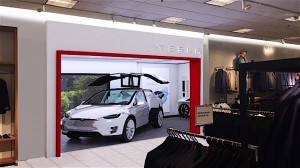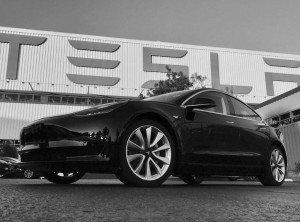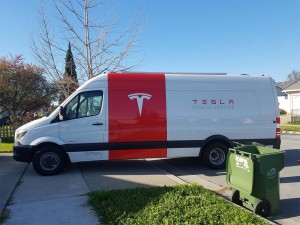Tesla plans to add at least 100 new service centers, as well as 1,400 service technicians and a fleet of service vans to keep pace with the planned, rapid ramp-up of production of its first high-volume product, the Model 3.
With sales expected to grow to as much as 500,000 vehicles next year – a six-fold increase over the 84,000 sold in 2016 – Tesla’s current service and repair network would be overwhelmed, many analysts have warned, even if the new Model 3 were to come to market with industry benchmark quality and reliability. Tesla current only has about 150 service centers in operation to cover the entire U.S. market.
Despite a price tag that runs less than half that of a current Model S, buyers of the new Model 3 “will have high expectations” for their new vehicles, said David Sullivan, a senior analyst with AutoPacific, Inc.
(Tesla rolls the first “saleable” Model 3 out of its Fremont plant. Click Here for the latest.)
Where owners of the Model S typically have other vehicles at home to turn out and can tolerate it being out of service for a few days, said Sullivan, the Model 3 is likely to be a buyer’s only car, so any service issue could prove disruptive.
While Tesla declined to discuss specific service and warranty-related topics, it has been widely reported that the automaker has had numerous issues with the battery packs and motor drive units, among other things, on its existing products, especially the Model X SUV that has drawn the wrath of influential Consumer Reports magazine.
Currently, however, getting a vehicle services or repaired can be a challenge. Because Tesla insists on owning all its stores, it has only received permission to set up operations in some states and, in many instances has only one or two dealerships in those states where it does operate. Complicating matters, many of those are showrooms only – the downtown Santa Monica facility being a good example.
On the positive side, Tesla notes that the electric drive technology its product use eliminate the need for many routine service operations required for vehicles using gas and diesel powertrains, such as oil changes and tune-ups. Meanwhile, all Tesla products, including the new Model 3, have onboard sensors that closely monitor key vehicle functions. So, in many cases, the company’s service technicians will know precisely what is wrong with a Tesla product before they ever physically see it.
Nonetheless, repairs will be necessary, even if Tesla can reduce the number of problems it has had with the Models S and X.
The company already operated about 150 service centers, a figure that will soon grow to 250. It also plans to add about 1,400 technicians and support staff. Some of those will be assigned to the service vans Tesla often uses as a sort of mobile service shop. Currently, there are 35 of them in operation. Tesla plans to add another 350, though some will be launched in overseas markets, such as Europe and China.
(A good week gone bad for Tesla. Click Here to learn what went wrong.)
Thanks to those remote diagnostics capabilities, Tesla will be able to determine when problems are modest enough to be fixed at a consumer’s home or office, or where a breakdown occurs. But, in some cases, such as the failure of a battery pack, the company will still have to send a flatbed truck out to carry a disabled vehicle to one of those service centers. Currently, some owners have to wait days because there are no facilities within hundreds of miles.
Industry observers have warned that if Tesla can’t provide reasonably quick service for a major problem with the new, $35,000 Model 3 it could wind up short-circuiting its effort to become a mass market manufacturer.
(Tesla takes fire for sexual harassment at Fremont plant. Click Here for the story.)



